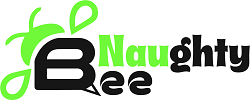Crafting a sound research methodology is critical to the success of any research project, but it can be especially challenging in Chapter 3. This is because Chapter 3 is often where students first encounter the research process and may not clearly understand how to approach it. A sound research methodology will ensure that your research is rigorous and comprehensive, and that you are able to answer your research question(s) in a detailed and convincing way.
There are a number of factors to consider when crafting a sound research methodology, but in this article we will focus on three key elements: literature review, research design, and data analysis. A well-conducted literature review is essential to a strong research methodology. It will help you to understand the existing body of research on your topic, and identify any gaps that your research will aim to fill. A good literature review will also allow you to situate your research within the broader context of your discipline.
Your research design should be carefully planned and structured in order to ensure that you are able to collect the data you need to answer your research question(s). Remember to consider the feasibility of your research design, and whether it is appropriate for the type of data you are working with
Defining the research problem and purpose
The research problem is the core of your research project and it is important to spend time crafting a good research problem. The purpose of this section is to provide some tips on how to define the research problem and purpose. A good research problem should be: – specific: it should be focused on a particular issue or problem – researchable: it should be something that can be investigated using primary or secondary data – significant: it should be important to the field of study – clear: it should be clearly defined and understandable – feasible: it should be possible to address within the scope of the research project The purpose of the research project should be: – to address the research problem – to add to the body of knowledge in the field – to find new and innovative solutions to the problem – to fill a gap in the current research.
Reviewing the literature
The first step in writing a sound research methodology is to review the literature. This will help you to identify the gaps in the existing research and to determine the best way to fill those gaps. In order to do this, you will need to read a variety of sources, both primary and secondary. The best way to find relevant literature is to use a database such as Google Scholar or JSTOR. When reading the literature, it is important to take comprehensive notes.
These notes should include the author’s name, the work’s title, the publication date, and a summary of the main arguments. It is also helpful to highlight key passages. As you read, you should be constantly asking yourself questions such as: what are the main ideas of this piece? What are the implications of these ideas? How does this work contribute to my understanding of the topic? Once you have a good understanding of the existing literature, you can start to formulate your own research questions.
These questions should be specific, achievable, and relevant to the current debates in the field. Once you have settled on a few potential research questions, you can start to think about the best way to answer them. This will involve designing a research methodology suited to your topic and question. There are a number of different research methodologies that you can use, and the best one for you will depend on a number of factors, including the nature of the question, the type of data that is available, and your own skills and interests. Some common research methodologies include surveys, interviews, focus groups, and case studies.
Once you have designed your research methodology, you will need to gather data. This can be done through primary or secondary sources. Primary data is data that you collect yourself, through surveys, interviews, or observations. Secondary data is already collected by someone else, such as census data or data from previous research studies. After collecting the data, you will need to analyze it. This will involve looking for patterns and connections in the data, and interpreting what these patterns mean. The results of your analysis will be the basis for your conclusions and recommendations. When writing up your research methodology, it is important to be clear and concise. You should explain what you did, why you did it, and how you did it. You should also discuss the limitations of your methodology and the implications of your findings.
Developing research questions
When developing research questions, it is important to consider what you want to learn from your research. What are the goals of your study? What research questions will help you achieve these goals? The type of research questions you develop will also depend on the type of research you are conducting. For example, if you are conducting a literature review, your research questions might focus on identifying gaps in the existing literature.
If you are conducting an experiment, your research questions might focus on whether a particular treatment is effective. Regardless of the type of research you are conducting, there are a few things to keep in mind when developing research questions: 1. Make sure your research questions are clear and concise. 2. Make sure your research questions are specific. 3. Make sure your research questions are achievable. 4. Make sure your research questions are relevant to your goals.
5. Make sure your research questions align with the research type you are conducting. When developing research questions, it is also important to consider the ethical implications of your research. What are the potential risks and benefits of your research? How will you protect the rights of participants? These are important considerations to make when developing research questions.
Deciding on the research design
When crafting a research methodology, deciding on the appropriate research design is important. The research design is the plan or framework that will guide the research process and help to ensure that the necessary data is collected. There are a number of different research designs that can be used, and the most appropriate design will depend on the research question(s) being asked and the type of data that is required. One of the most popular research designs is the experimental design, which is often used in scientific research.
In an experimental design, the researcher manipulates one or more variables and observes the effect on another variable. This type of design is useful for investigating cause-and-effect relationships. Another common research design is the correlational design, which is used to examine the relationship between two or more variables. In a correlational design, the researcher measures the variables of interest and looks for a relationship between them.
This type of design is useful for exploring the nature of a relationship, but cannot be used to determine causality. The final type of research design that will be discussed is the case study design. This type of design is often used in qualitative research, and involves an in-depth study of a single individual, group, or event. Case studies are useful for generating hypotheses and for understanding complex phenomena. No matter which type of research design is used, it is important to carefully plan and execute the methodology to ensure that the results are reliable and valid.
Collecting and analyzing data
Data collection and analysis is a central part of any research project. The data that is collected must be reliable and valid, and it must be analyzed in a way that produces meaningful results. There are many different methods of data collection, and each has its own advantages and disadvantages. The most common methods are surveys, interviews, focus groups, and observation. Surveys are the most commonly used method of data collection in social science research.
They are relatively quick and easy to administer, and they can be used to collect data from a large number of people. However, surveys can be biased if the questions are not carefully designed and can be expensive to administer. Interviews are another common method of data collection. They are more flexible than surveys, allowing the researcher to ask follow-up questions and probe more deeply into the respondent’s answers.
However, interviews are time-consuming and expensive, and they can be biased if the interviewer is not well-trained. Focus groups are another type of interview, but they are conducted with a group of people rather than individually. Focus groups can be helpful in generating new ideas and in exploring controversial topics. However, they can be difficult to manage, and the results can be biased if the group is not diverse. Observation is another method of data collection. It can be used to collect data on behavior, but it is often used in conjunction with other methods such as surveys and interviews. Observation can be time-consuming and expensive, and it can be difficult to collect data on some types of behavior.
Developing a sound research methodology is a critical component in producing a quality research paper. By spending the time upfront to develop a clear and concise research methodology, scholars can save themselves a great deal of time and effort later on in the writing process. A well-crafted research methodology will provide a roadmap for the research process, helping the scholar to stay on track and avoid getting bogged down in irrelevant details. It is therefore essential that scholars take the time to carefully craft a sound research methodology before embarking on the writing process.


